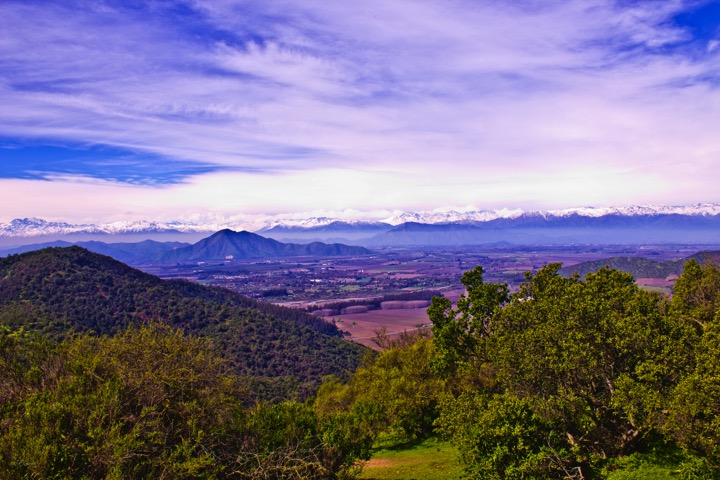
For all those who enjoy the good life and want to discover one of Chile’s “musts”, we recommend Isla de Maipo, a small town in Central Chile, located in the heart of the Maipo Valley in Santiago’s Metropolitan Region.
Isla de Maipo is known worldwide as a wine destination thanks to its wineries. Furthermore, its country traditions, history and cultural heritage that still remain alive, make the visit to Isla de Maipo a truly unforgettable experience if you come with a good guide that leads you, tells you about the most interesting details and shows you the unrevealed secrets of the place.
The essence of the region, fresh, green and traditional, has its origin in a melting pot of local cultural roots and European influence where you can appreciate an international projection based on the quality of local products and a concern for a brand image.
In Isla de Maipo you can find the huasos (Chilean traditional countrymen) with family-run wineries where wine is produced and aged using traditional methods passed from generation to generation. Places where you will feel at home and taste wines in a friendly, welcoming and family atmosphere. Or big names of the Maipo Valley where you can enjoy some of the classic or more innovative local wines.
The surroundings

Vineyards and Wineries

Tarapacá winery obtained its first international award at the “Centennial International Exhibition, 1878, Philadelphia, United States” two years after it was founded.
Architectural heritage

Nature - Naltahua, Altos de Cantillana

Naltahua is a rural location close to Isla de Maipo, with small farms worked by country families known as huasos.
It is located within an area called Cordón de Cantillana, the number one location for biodiversity preservation in the Metropolitan Region of Santiago.
Industrial Heritage

Old gold and copper mines of Naltahua
We suggest a trip to the past in which you can imagine the mine buzzing with activity, with thousands of miners working, coming alive again with its old buildings, its big smelting furnaces and the rails and tunnels used to extract and transport the minerals.
Religion - Our Lady of Mercy

The church of Our Lady of Mercy and the people’s religious beliefs are an important tourist attraction due to the miracle of the virgin that took place in Isla de Maipo. This church has the category of Sanctuary and there is an open process at the Vatican to be considered a Basilica.
The festivity of the Virgin of Mercy is one of the best known traditions of Isla de Maipo.
This event takes place every year on the last Sunday in September. The festivity attracts more than 80,000 pilgrims from all over the region and abroad.
Some history about Isla de Maipo





